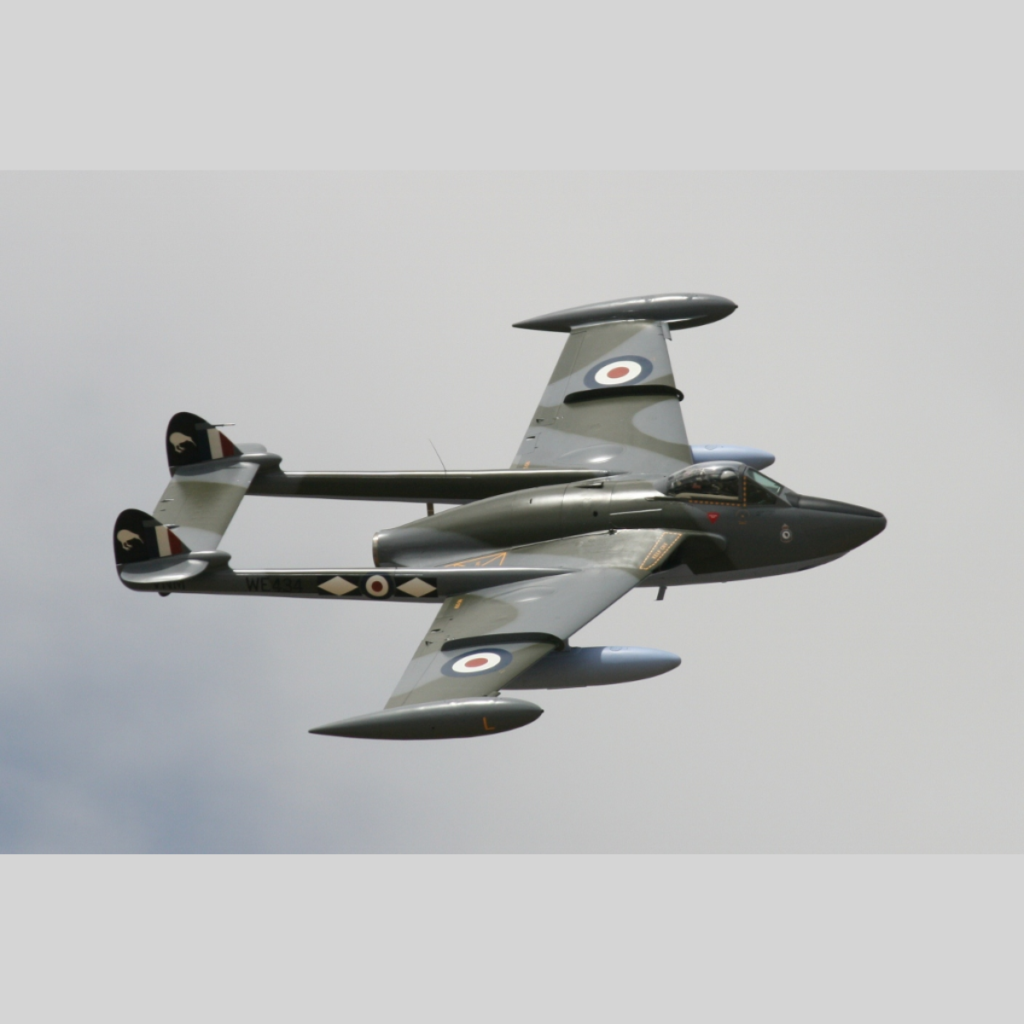
The de Havilland Venom, a British post-World War II jet-powered fighter-bomber, emerged from the de Havilland Aircraft Company. Its development aimed to improve the performance and operational capabilities of its predecessor, the de Havilland Vampire. Despite its innovative design, the Venom faced numerous challenges during its service life, leading to its eventual cancellation.

Development
The late 1940s marked the development of the Venom, with the first prototype, the DH.112, taking flight on September 2, 1949. The aircraft aimed to address the Vampire’s limitations, such as speed, range, and payload capacity. The Venom boasted a thinner wing, an upgraded de Havilland Ghost engine, and a more streamlined fuselage. It also featured an advanced ejection seat system for the pilot’s safety.
The FB.1, the initial production version of the Venom, entered service with the Royal Air Force (RAF) in 1952. Later variants included the FB.4, with an improved Ghost engine and other modifications, and the NF.3, a dedicated night fighter version.

Operational Use
The de Havilland Venom experienced extensive operational use during its relatively short service life. The RAF deployed it in various roles, such as fighter-bomber, night fighter, and reconnaissance missions. The Swiss Air Force and the Swedish Air Force also utilized the Venom.
The RAF notably deployed the Venom during the Suez Crisis of 1956 for ground-attack missions against Egyptian targets. The aircraft also participated in combat during the Malayan Emergency, engaging in counter-insurgency operations against communist guerrillas. The Venom’s versatility, speed, and capacity to carry various weapons, such as rockets, bombs, and napalm, made it a formidable force in these conflicts.
Flaws
Despite its successes, the de Havilland Venom faced several flaws that limited its effectiveness and ultimately contributed to its cancelation. One significant issue was its limited range, which made it less suitable for long-distance missions. Furthermore, its early jet engine technology meant that the Ghost engine was prone to reliability issues and frequent maintenance.
Another problem was the aircraft’s lack of radar, which limited its effectiveness as a night fighter. Although the NF.3 variant was fitted with an AI.21 radar, it was deemed inadequate and quickly became obsolete as technology advanced.
Finally, the Venom suffered from structural issues, including wing fatigue and in-flight failures. These issues were exacerbated by the high-G forces experienced during low-level, high-speed missions. Several fatal accidents occurred as a result of these flaws, raising concerns about the safety of the aircraft.

Cancelation
By the late 1950s, the de Havilland Venom was becoming increasingly outdated. Its flaws and limitations, coupled with the rapid advancements in aviation technology, meant that it was no longer a viable contender in the fast-paced world of military aviation. In response, the British government decided to phase out the Venom in favor of more modern aircraft, such as the Hawker Hunter and the English Electric Lightning.

The last operational Venoms were retired by the RAF in 1962, marking the end of the aircraft’s service life. The cancelation of the de Havilland Venom, despite its initial promise and operational successes, serves as a reminder of the constant evolution and rapid pace of change in military aviation technology.